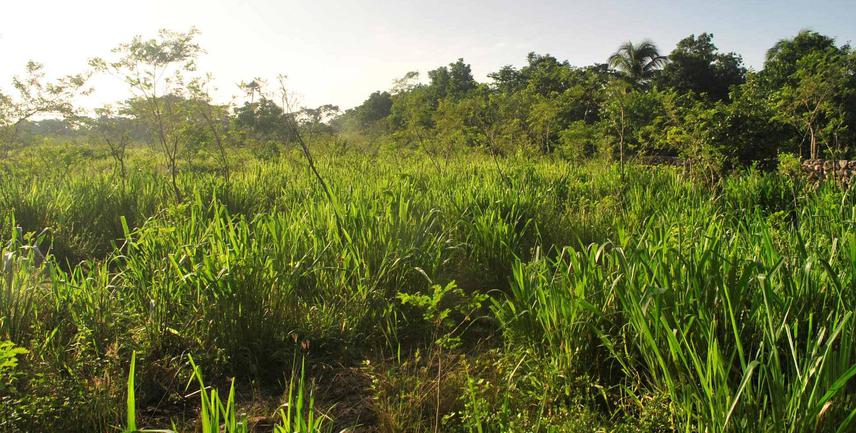Fredy Alexander Alvarado Roberto
The aim of this project is analyse the relationship between dung beetle diversity, yield production and ecosystem services supply in different livestock production systems.

Silvopastoral System.
The transformation of natural ecosystems as a consequence of increased demand for food is one of the main factors responsible for biodiversity loss. More than half of the world´s land is used for crops (12%), livestock grazing (33%) and exotic tree plantations (15%). Clearly, understanding the value of livestock grazing to biodiversity, and the interaction between yields (production per unit area), biodiversity and ecosystem services is key to minimising the impact of food production on wild nature. In many tropical regions, agroforestry and silvopastoral systems (i.e. those that combine pasture and trees) emerge as land use systems that may be compatible with biodiversity conservation and ecosystem service provision. However, few studies have examined the relationship between biodiversity, yield production and ecosystem services under different land-use strategies that producing varying quantities of food (meat).
Coprophagous beetles (dung beetles, Scarabaeidae) are well known for their role in the functioning of ecosystems, including the incorporation of organic matter into the soil and the control of the hematophagous (blood-sucking) flies and gastrointestinal parasites that develop on dung and affect both domestic animals and people. Through this research, and using the dung beetles as a study model, it may be possible to generate information regarding how species densities change in response to the different livestock production systems and how these, in turn, affect or favour the re-establishment of ecosystem services that are important to the activity of livestock production (dung removal and control of hematophagous flies). This study will provide solid evidence regarding which livestock production systems are most efficient in terms of biodiversity conservation and maintenance of ecosystem services.
With this information, it will be possible to predict whether the projected demand for meat and other products will be better satisfied with small areas of high yielding production, or by larger areas with lower-yielding production regimes (e.g. silvopastoral systems). Similarly, through the analysis of the ecosystem services regulated by the dung beetles an understanding can be gained of the functional consequences of habitat modification and of the management practices in highly diverse ecosystems.